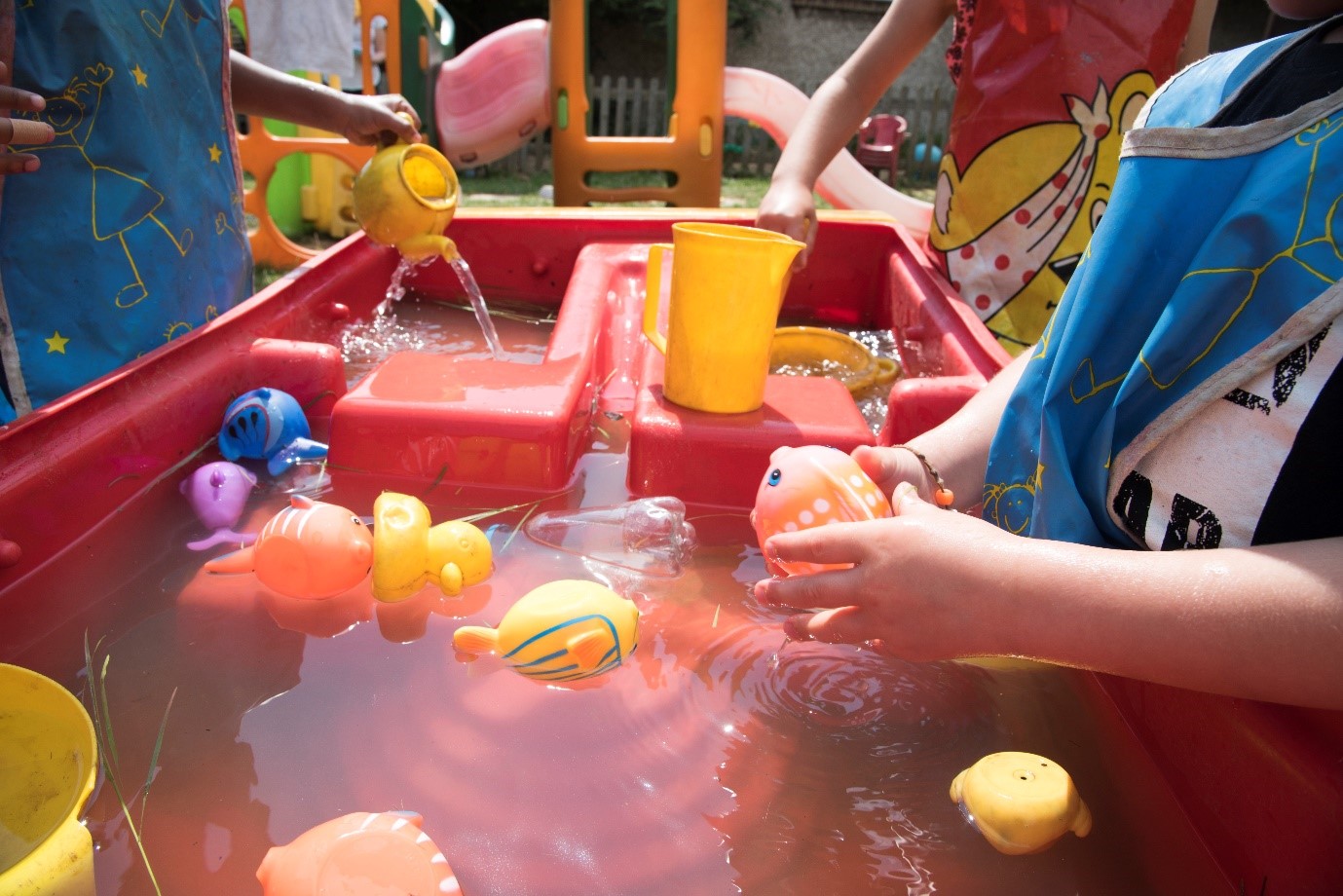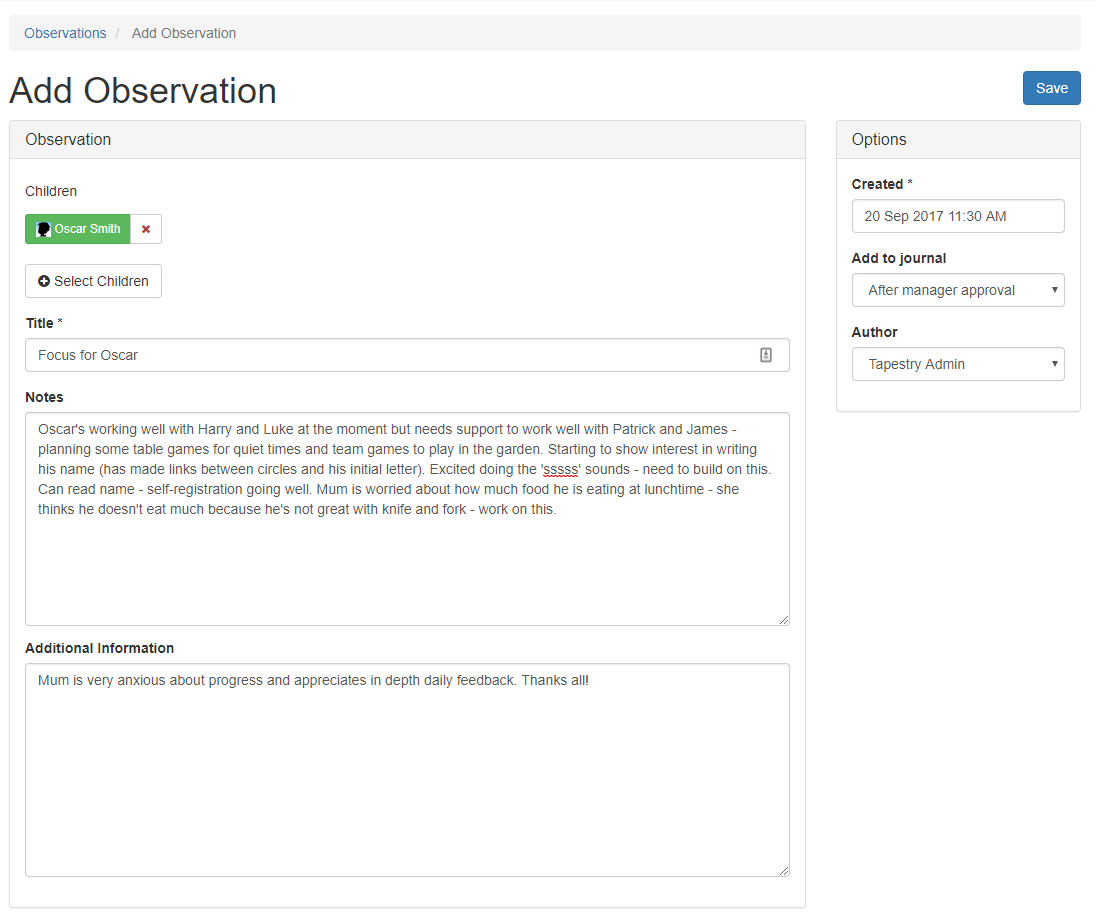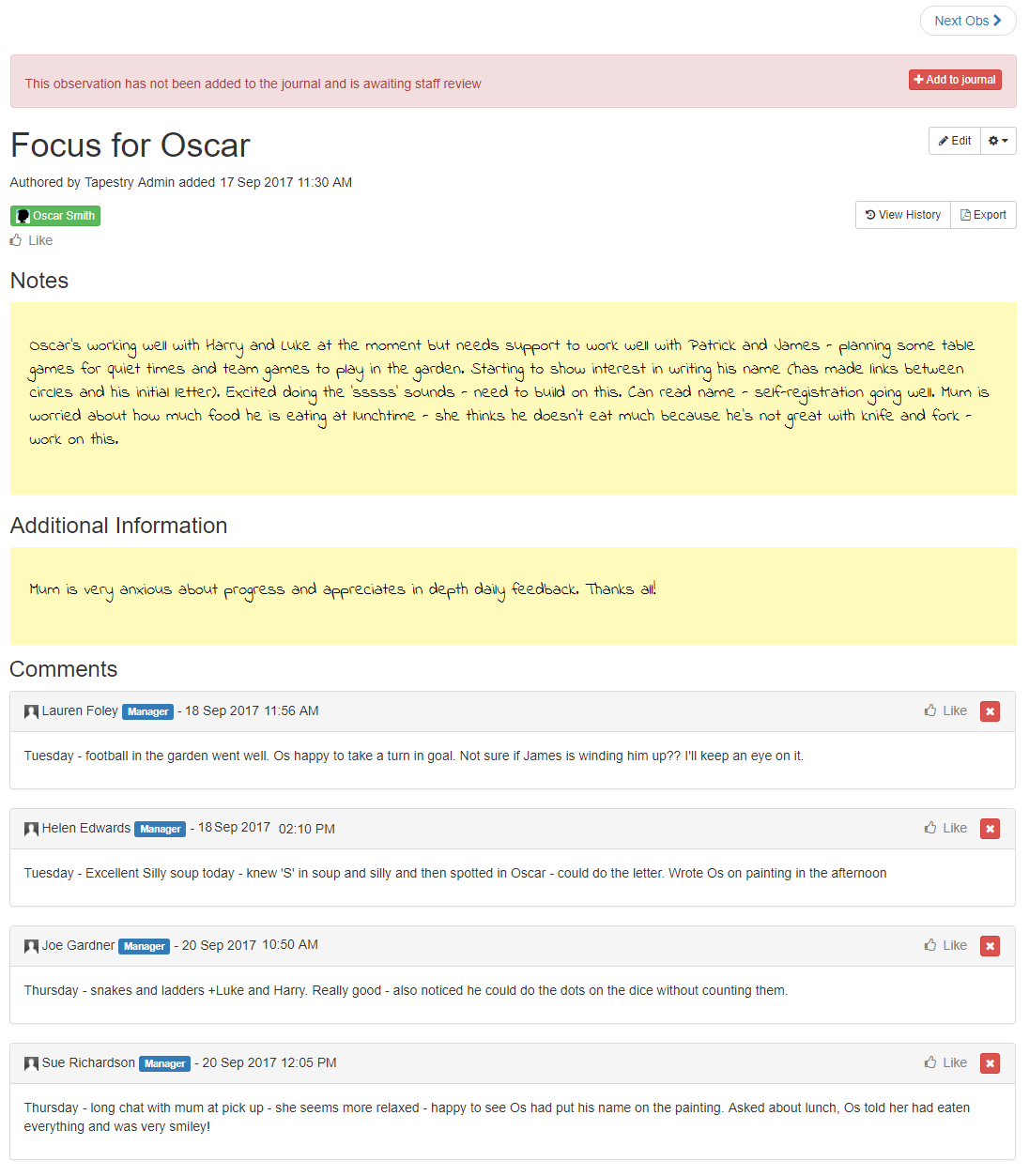“Have you ‘done’ your next steps?” … “What are you doing for Bobby’s next steps?” … “How many next steps did you do?” … Questions discussed all too frequently in early years settings across the country. They are certainly questions that are asked on FSF frequently. Here are some forum threads on ‘Next Steps’ that illustrate this point.
It comes up on the FSF sufficiently often that I have begun to wonder if we, in early years, are perhaps looking for ‘an answer’ – the Next Step ‘Holy Grail’ as it were. Sensibly, we all know that there cannot be an answer, children are all different, they develop and progress at different rates in different circumstances. We cannot plan rigid, sequential learning steps for all children and we shouldn’t expect all children to fall smartly into a regimented line. Some things we can make happen more quickly by providing focused and targeted support, other things will just happen in their ‘own good time’. How many times have we, as teachers, reassured anxious parents with ‘Don’t worry, it’ll come!’ when they are getting upset that their child isn’t speaking sentences yet, or rolling over, or writing their name. There is a natural inclination to compare children to one another yet we know, deep down, that they will develop in their own unique and fascinating way and will take a completely different route to their eventual individual skill set than their peers. Nancy Stewart’s article ‘Development Matters: A landscape of possibilities, not a roadmap’ reminds us that the route to secure knowledge and development is not a straight path, rather it is one that will twist, turn and double back on itself before it finds its own way.
This concept of children finding their own route and developing in their own way is crucial to have in mind when thinking about next steps. To go back to basics when thinking about next steps makes sense. We should challenge ourselves to consider ‘What do we mean by ‘a next step’?’ and moreover ‘Does a child actually need one?’ In the first article of this series ‘Next steps, choose wisely’ we touched on this suggesting that for very young children and babies everything is a next step and to give one priority over another isn’t always helpful or necessary. So, given a healthy scepticism about next steps we should consider if we do set them, why do we set them? The Statutory framework for the early years foundation stage (EYFS) says:
“The EYFS specifies requirements for learning and development and for
safeguarding children and promoting their welfare. The learning and development
requirements cover:
• the areas of learning and development which must shape activities and
experiences (educational programmes) for children in all early years’ settings
• the early learning goals (ELGs) that providers must help children work towards (the
knowledge, skills and understanding children should have at the end of the
academic year in which they turn five)
• assessment arrangements for measuring progress (and requirements for
reporting to parents and/or carers)” [DfE.2017]
There are indicators here relevant to next steps in terms of the DfE expectations. Also, therefore, by association, the expectations of the industry regulator, Ofsted. If we look at the requirement that: “areas of learning and development … must shape activities and experiences” It is clear from the word ‘shape’ that learning and development must be ‘planned’ in some way to meet children’s needs. ‘Shape’ is an active verb; to ‘shape’ something is to exert some influence over it (Cambridge online dictionary). If we are to have influence we need to have an idea of ‘where we are going’ or ‘where we are aiming’. Usefully, the EYFS stipulates exactly where our influence should lead us:
“the early learning goals that providers must help children work towards (the knowledge, skills and understanding children should have at the end of the academic year in which they turn five)” [DfE.2017]
So, providers must plan, and the end goal is clearly labelled. It seems logical therefore to assume that there is a starting point and an end point; and there will be points along the way – to access these ‘points along the way’ teachers need to plan next steps. This contradicts the idea that children find their own way and will get to the ELG end point in their own time. Bearing this in mind, I would argue that a skilled teacher needs to consider both possibilities when planning next steps for children.
So, where does that leave us? We simultaneously need to be able to plan next steps that will enable every child, given their individual potential, reach the early learning goals. Whilst, still allowing children to plough their own sometimes erratic furrow. Such is the skill of an excellent early years teacher!
 Linear progression vs ‘what happens with ‘real’ children!
Linear progression vs ‘what happens with ‘real’ children!
The practicalities of setting next steps opens a whole new can of worms. Consider the following questions about next steps: Do we need to write them down? How many do we need at once? Who do we need to tell about them? You’ll recognise these questions as being the ones posted on the FSF.
Perhaps the important thing to remember is that the next steps must work for the child; they must demonstrate how you, as a teacher, plan to move a child from their current stage of development towards the ELGs. When you are inspected this is the kind of question you might expect from an inspector ‘where is the child now? Where are you aiming for them to be when they leave you? How are you going to get them there?’. Simply writing a next step, e.g. ‘to be able to write their name’ doesn’t make it happen, it is the planning of activities to make fingers and hand muscles strong and the consistently naming the letters and sounds of their name when seen in environmental print that enables a child to move towards the next step.
In her article Planning next steps in the moment Anna Ephgrave explains:
“A skilful practitioner knows that they need to observe before interacting with a child and they know that the best interactions are not planned in advance.”
Anna makes the point that this is simply good teaching i.e. you have a good knowledge of a child (what they are, and are not, capable of) and when working with them you react to what you see ‘in the moment’ and adapt and modify your teaching accordingly. The view in this article is that lengthy written planning in advance is unnecessary and unhelpful. Instead, practitioners should take a more holistic view of a child’s learning and should consider which activities or provocations would challenge and motivate children to learn. If an environment is truly ‘enabling’ children will be naturally curious and will learn without realising it.

Child-led water play activity
Working with the ‘planning in the moment’ pedagogy the practitioner might identify the teaching method they use to help move the child on in their learning. This might mean that words such as ‘modelled’, scaffolded’, ‘challenged’ appear in any teachers notes. Through this, and following careful reflection, a pattern of the child’s learning styles might emerge which can be used to inform subsequent teaching – with no written next steps at all. ‘In the moment planning’ fully meets the statutory requirements of the EYFS.
However, in other settings staff might need to have a more explicit plan for children that is shared and understood by several members of staff. In these cases, next steps written in advance might be helpful, but these are aide memoires for the staff – they are not adding to the child’s learning. The requirements of the EYFS are very clear and unambiguous. Consequently we, as teachers, need to consider how we are going to meet them. I would say that the following points must be taken into consideration:
· The next steps must work for the child – teachers need to be meeting the requirements of the EYFS.
· The setting, recording and evaluating next steps process must be practical and should not be onerous for staff. Ofsted need to see that you are meeting the requirements of the EYFS, they don’t stipulate how you should do it.
· Any plan for a child should include the opinion of all involved with their learning and development. At the very least this should be the child (if they are able), their teacher(s) and their parents or carers.
Here then, are three case studies for handling the ‘next steps’ issue in different settings:
A full day care nursery
In this nursery, staff work in teams according to the room they are in. All staff are key people for a small group of children in the room and they are responsible for the next steps for those children. All staff in the room will observe and assess all children. Observations and assessments are reviewed and collated by the key person. All staff in the team chat to parents on a daily basis. Consequently, all staff have a clear picture of the priorities for each child.
Next steps are planned ½ termly and are decided following conversations within the team. A note about which next steps staff are considering is sent home for parents to see and to make comments and suggestions bringing into account their priorities from home. With older children, the next steps are discussed and shared and the child’s point of view taken into consideration.
There are generally only 2 or 3 things chosen to work on with a child. They might be a prime area developmental point that a child needs help with e.g. sharing play space with others. Then, a specific area point to move forward e.g. encouraging and supporting the mathematical skills by harnessing their interest in sorting the farm set animals. Finally, perhaps, a point from home e.g. putting on a coat and putting their arms in the sleeves.
Once these are agreed the next steps are put into the child’s learning journal and any subsequent observations or assessments that are relevant are linked to them. Parents comment in the learning journal if they think they have seen progress or achievement at home. With the whole staff team knowing the priorities for each child there can be a shared understanding of how to help them.
When it comes to reviewing the next steps, staff think about whether the next steps can be extended, changed or continued. Since all staff have a close relationship with the child and their family they are able to make those decisions together to help the child to make the best possible progress.
A childminder
In our case study, we spoke to a team of 3 childminders working together in one house. They told us:
It’s like in a nursery, sometimes the person who drops off doesn’t see the same person that picks up, so all the staff need to know the children well. All children have a key person allocated to them during settling. The key person can be changed if the child shows a stronger bond with a different member of staff. Once a child is happy and settled a baseline assessment is made. This is a big observation which addresses every area of learning. From that initial observation, the first next steps are decided. In setting the next steps we use our own knowledge of the child and also talk to parents about their priorities from home. We don’t set a limit on how many next steps there are - might have just one – something we are working really hard and really concentrating on - others might have several smaller ones. We talk to parents every day so they feel fully informed. When next steps have been decided we display them for staff to see.
Additionally, we share the next steps with the children. In our playroom, there is a photo of each child with their name. Attached to that is a pictorial representation of their next steps – for example if a child was concentrating on their tripod grip, we might have a picture of a hand holding a pencil. These picture cards are laminated so that the child can see it, take it down and look at it and talk about it. It’s important that they can see the photo and know what we are thinking about. The children know they are next steps and so can choose one to work on. We review the next steps constantly and next steps changed as necessary.

On discussion, the childminders told us that they would use the same system even if they were to work on their own as a childminder, not as part of a team.
A school nursery
The school nursery that we spoke to manages their next steps very differently. Following discussions with other staff, with the parents and with the child about the child’s current interests and motivations the teacher writes a short paragraph describing their plans for the child over the next couple of weeks. This particular school does this on Tapestry, they write this as an observation and assess the child’s current attainment points. This is not uploaded to the journal, it is kept for staff view only. Other staff who work with the child through the week add their own comments underneath reflecting on how the child is progressing. This creates a chain of responses linking to the teacher 's original post. When the teacher reviews the comments made on the next steps ‘thread’ they edit the original assessments and upload any new media from the subsequent observations. They can incorporate any comments by staff into the observation and delete the comments from the chain once they have reviewed them. Once edited and assessed, this large 'observation' is uploaded to the child's journal for parents to view and comment on. Parents will not see the comments made by staff during the 'Next Steps' period as they are put into the observation and deleted before uploading to the journal. This means that at the end of the 'Next Steps' period the assessments will reflect the child’s attainment at the end of the period. Any other observations made that are not linked to the next steps are made as usual as individual, separate observations. The school report this as a very easy way of keeping a track of next steps and making sure that everyone involved with a child’s learning knows what the priorities are for them.


Clearly there is no ‘one way’ with Next Steps - you have to do what works for you and your setting, remembering that all children are working towards all next steps all the time. Your role as a teacher is to identify the most pertinent ones for a child at any one time and to ensure that whichever next steps you choose are shared with everyone who has an interest in helping the child make progress.
Children do better when there is a shared understanding of how to help them achieve.
References
Department for Education. 2017. Statutory framework for the early years foundation stage. Setting the standards for learning, development and care for children from birth to five
Cambridge online dictionary. (Accessed 08/09/2017)



Recommended Comments
There are no comments to display.